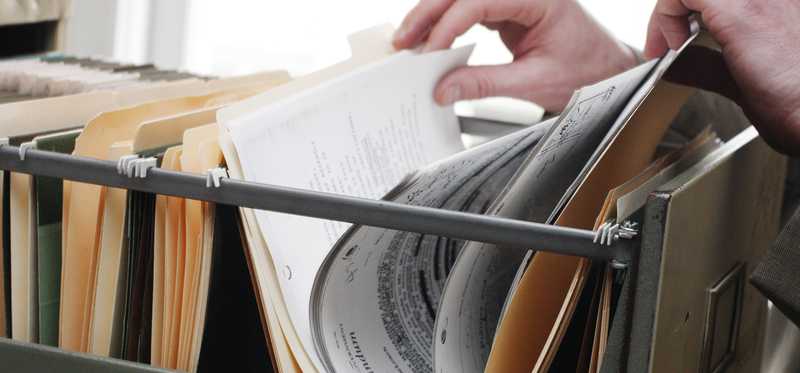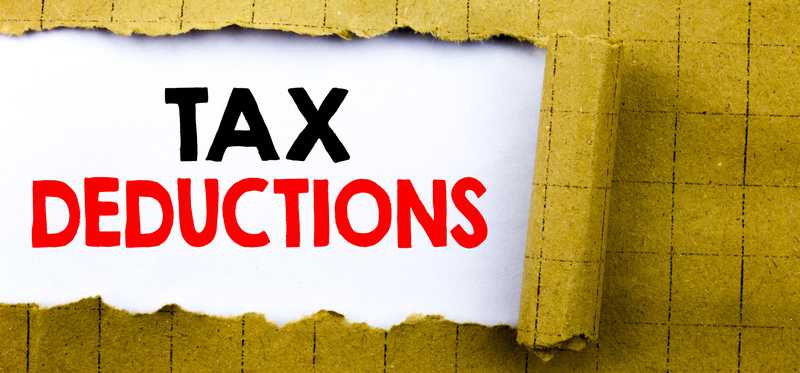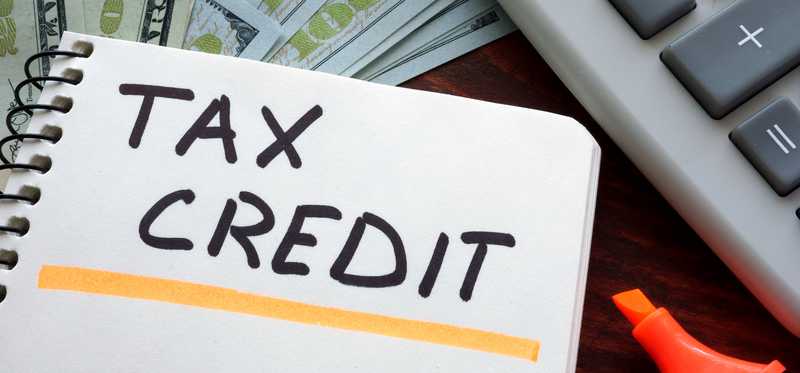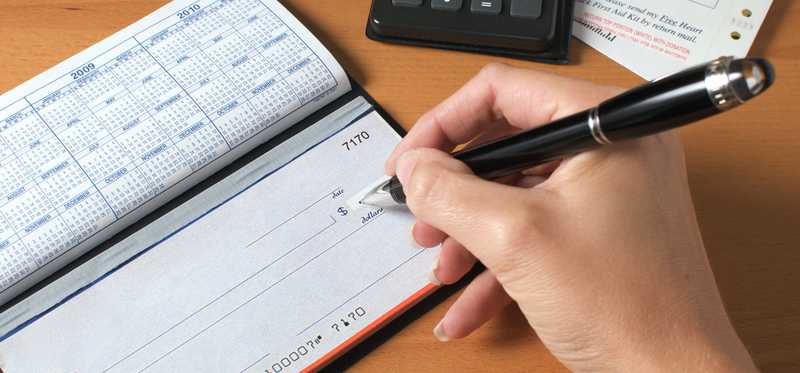15 Tax Hacks for 2021

15 Tax Hacks for 2021
You can save more than you think
Taxes may be an unpleasant and inevitable part of life, but the amount that you hand over to Uncle Sam isn't entirely out of your control. By becoming a little more tax savvy and employing a few strategies, you can shrink your tax bill -- possibly by a lot.
Here are 15 ways to cut your taxes -- see how many you can employ.
5 Winning Stocks Under $49
We hear it over and over from investors, “I wish I had bought Amazon or Netflix when they were first recommended by the Motley Fool. I’d be sitting on a gold mine!” And it’s true. And while Amazon and Netflix have had a good run, we think these 5 other stocks are screaming buys. And you can buy them now for less than $49 a share! Simply click here to learn how to get your copy of “5 Growth Stocks Under $49” for FREE for a limited time only.
Previous
Next

1. Be organized
It may not seem that important to be organized when it comes to taxes, but it is. Without good records -- and, often, receipts -- you may not be able to take certain valuable deductions. (Heck, you may not even know how much you paid for certain deductible expenses.) So have a designated spot in your home for any tax-related and potentially tax-related documents, such as receipts for purchases and donations. That might be a folder in your office or a shoebox in the kitchen -- whatever works for you. When tax season arrives and you start receiving 1099 forms and tax documents from your employer, banks, and brokerages, park them in the folder, too. You'll thank yourself -- or your tax preparer will -- come time to prepare your return.
Previous
Next

2. Hold onto your investments a little longer
It's not smart to try to time the market, jumping into stocks based on your guess about when the market will rise and jumping out of stocks before you expect a big market drop. No one knows what the market will do in the next week or even year. You might want to pay a little attention to timing, though, before you sell a stock. Here's why: The short-term capital gains tax rate for stocks held for a year or less is your ordinary income tax rate -- which could be 24% or higher. But the long-term capital gains tax rate (for stocks held for at least a year and a day) is generally lower. It's currently 0% for low-income folks, 15% for most of us, and 20% for high earners.
That doesn't mean you should always hold your stock for at least 366 days -- sometimes you need to sell when you want to sell. But if it's been less than a year and holding until you've owned the stock for more than a year is reasonable, consider doing so.
Previous
Next

3. Offset capital gains with capital losses
Losing money in stocks is something every investor does now and then. But there's a silver lining to that unhappy experience: You can offset taxable gains in stocks with your losses and you can even offset some taxable income, too. Here's how it works: Imagine that you have $10,000 in capital gains and you sell shares that give you a capital loss of $6,000. You can offset $6,000 of gains and only get taxed on $4,000. If you have, say, $6,000 in gains and $10,000 in losses, you can remove all your gains from taxation and you'll have $4,000 in losses left over. You can then apply $3,000 to your income, shrinking your taxable income by $3,000. Whatever loss is left over can be rolled over to the following year. Read up on this tax loss harvesting strategy to make the most of it.
Previous
Next

4. Don't miss your required minimum distributions
This is a vital tax tip if you're anywhere near age 70 or beyond: Don't miss taking your required minimum distributions (RMDs) on time! Several kinds of retirement accounts, such as traditional IRAs and 401(k)s, feature required minimum distributions, which must be taken annually once you pass a certain age milestone -- currently age 72, if you were born on or after July 1, 1949. It's smart to set up your account so that your RMD is sent it to you automatically each year.
If you're late taking your RMD or miss it entirely, the IRS levies a very harsh penalty: fully 50% of the amount you didn't withdraw on time. So if you were supposed to withdraw $5,000, you're looking at forfeiting $2,500! (The IRS does let you appeal for a waiver.) Know, too, that RMDs were suspended for 2020 by the Coronavirus Aid, Relief, and Economic Security (CARES) Act.
ALSO READ: 1 Retirement Planning Move That Could Potentially Eliminate Your Future Taxes
Previous
Next

5. Donate money to charities
Many of us donate money to charities and enjoy tax deductions from them. You can, too! Here's how it works: Donate, say, $1,000 to a qualifying "tax-exempt" charity, and you might be able to deduct $1,000 from your taxable income. If you pay about 24% in taxes, overall, you'll be saving $240. You'll need to follow the rules, though, which including having a receipt or acceptable documentation for donations valued at $250 or more. Note, too, that since 2018, standard deductions have roughly doubled in size, so many people won't find it worthwhile to claim charitable (and other) deductions that require itemizing deductions, since they'll get a bigger deduction with the standard one.
5 Winning Stocks Under $49
We hear it over and over from investors, “I wish I had bought Amazon or Netflix when they were first recommended by the Motley Fool. I’d be sitting on a gold mine!” And it’s true. And while Amazon and Netflix have had a good run, we think these 5 other stocks are screaming buys. And you can buy them now for less than $49 a share! Simply click here to learn how to get your copy of “5 Growth Stocks Under $49” for FREE for a limited time only.
Previous
Next

6. Use a health savings account
If you've got a high-deductible health insurance plan, you may be able to set up a health savings account (HSA) for yourself. It allows you to contribute pre-tax dollars (often along with company contributions) to your account and then use that money for qualifying healthcare expenses, such as doctor visits, prescriptions, and lab work. Flexible savings accounts (FSAs) are similar and also worth considering, but much of the funds in an FSA are on a use-it-or-lose-it basis, whereas HSA funds can remain in place even into your retirement. And at age 65, you can start using the money for nonhealthcare expenses, too, paying ordinary income tax on such withdrawals.
The HSA contribution limit is $3,550 for individuals and $7,100 for families for 2020, rising to $3,600 and $7,200, respectively, for 2021. Those 55 or older can chip in an additional $1,000. The contribution limit for health FSAs is $2,750 for 2020 and 2021. Dependent care FSAs have a $5,000 annual contribution limit for most folks.
Previous
Next

7. Time your mutual fund investments carefully
If you're planning to buy shares of mutual funds, give some thoughts to just when you do so, as there are tax issues that could cost you. Know, for example, that funds typically distribute dividends in December, and their shares fall in value by the amount of the distribution. So if you're planning to buy some shares of a mutual fund near the end of the year, aim to do so after that distribution and adjustment, so that you get a lower price and don't end up taxed on a distribution you didn't own for very long. (You can call the fund company to ask when the distribution will happen.)
ALSO READ: This Could Be the Most Important Tax Rule You Follow
Previous
Next

8. Claim any deductions you can
Another good way to save tax dollars is to make good use of any available deductions. Tax deductions exist for a wide variety of expenses, related to medical costs, charitable donations, state and local taxes paid, mortgage interest, qualifying contributions to qualifying retirement accounts such as traditional IRAs or 401(k)s, and qualifying home office expenditures, among other things. Remember that standard deductions are far more generous than they used to be, so some deduction possibilities won't be as attractive or possible these days.
Be sure to see whether you can take any above-the-line deductions, which don't require itemization and which reduce your adjusted gross income (AGI), on which your income taxes are based. Examples include contributions to HSAs and IRAs, alimony payments, student loan interest, and self-employment taxes.
Previous
Next

9. Claim all the tax credits you can
Tax credits are even better than tax deductions, because while a $1,000 deduction might shrink your tax bill by, say, 24%, or $240, a $1,000 tax credit can shrink it by $1,000. Credits offer dollar-for-dollar tax breaks. It's worth understanding the difference between "refundable" and "nonrefundable" tax credits. With an ordinary nonrefundable credit, if your tax due is $1,000 and your credit is for $1,500, it will wipe out your tax bill, saving you $1,000. If it were refundable, though, it would wipe out your tax bill and pay you the difference -- the $500 -- as a refund.
There are tax credits for a wide range of expenses, including education, foreign taxes paid, the adoption of children, the care of children and dependents, and energy-efficient home improvements. For example, the Child Tax Credit offers up to $2,000 per qualifying child, while the Earned Income Tax Credit (EITC) can put more than $6,000 back into the coffers of low-income households.
Previous
Next

10. Claim a home office deduction
If you work at home, which many more people are doing than ever before, you may be able to enjoy a home office deduction. It can allow you to deduct a portion of what you pay for utilities, mortgage interest, property taxes, home insurance, security expenses, homeowner association fees, home repairs, and maintenance expenses. You can also deduct the full cost of a dedicated phone line into the office if you have one, and the full cost of work done on that room, such as painting it. You just need to follow the rules and have a qualifying space in your home, which means, for example, that the space should be used exclusively for your business and must be your principal place of business.
5 Winning Stocks Under $49
We hear it over and over from investors, “I wish I had bought Amazon or Netflix when they were first recommended by the Motley Fool. I’d be sitting on a gold mine!” And it’s true. And while Amazon and Netflix have had a good run, we think these 5 other stocks are screaming buys. And you can buy them now for less than $49 a share! Simply click here to learn how to get your copy of “5 Growth Stocks Under $49” for FREE for a limited time only.
Previous
Next

11. Take advantage of the home sale exclusion
If you're planning to sell your home in the near future, you may be able to save many thousands of dollars -- potentially $500,000! -- thanks to the home sale exclusion rule. It lets you exclude up to $250,000 of your otherwise taxable gain on a home you sell from taxation -- and for married couples, the limit is up to $500,000. As usual, of course, you'll need to follow the rules, which include requiring the home to be your primary residence, where you have lived for at least two of the last five years (with a few exceptions allowed). So if you buy your home for $300,000 and it grows in value to $500,000 when you sell it, that entire $200,000 gain can be tax-free!
ALSO READ: 3 Ways to Benefit From the Current Real Estate Market Without Selling Property
Previous
Next

12. Make extra mortgage payments
Here's a clever way to save on your taxes: Make one or more extra payments on your home loan. Remember that mortgage interest is only deductible if you itemize deductions, so you'll need to have more in deductions than the standard deduction. One way some folks can achieve that is by making an extra mortgage payment or two before the end of the year. Doing so increases the total amount of interest you'll have paid over the year. The IRS doesn't care if you pay in December a payment due in January. It just counts the payments made during the tax year.
You might save even more, over the long run, by making additional payments against principal on your mortgage. That will shrink the total interest you'll pay over the life of the loan, and it can shorten the life of the mortgage as well.
Previous
Next

13. Contribute to an IRA or 401(k)
Here's an excellent way to enjoy some tax breaks -- by making contributions to Roth or traditional retirement accounts, such as IRAs and 401(k)s. With a traditional IRA or 401(k), you make contributions on a pre-tax basis, with that sum shrinking your taxable income for the year of the contribution. A contribution of, say, $6,000 will shrink your taxable income by $6,000 in the year of contribution. You're taxed only when you withdraw the money in retirement, when it will count as taxable income.
With a Roth IRA or 401(k), you contribute post-tax dollars and get no upfront tax break. But if you play by the rules, you'll eventually be able to take money out of those accounts tax-free. That can save you a lot of money if the account has grown to be worth a lot.
Previous
Next

14. Contribute to a SEP or SIMPLE IRA if you're self-employed
If you're self-employed, you'll be out of luck when it comes to standard 401(k) accounts, Roth or traditional. But you're not completely out of luck. There are special retirement accounts for self-employed folks, too. For example, you can set up a SEP IRA at most good brokerages, and enjoy much more generous contribution limits than regular IRAs and even 401(k)s. (It can be a little complicated figuring out how much to contribute and deduct with such accounts, so consider using tax-prep software or a good human tax pro.) There are other options for the self-employed, too, such as SIMPLE IRAs.
Previous
Next

15. Use tax-prep software -- or hire a tax pro
Finally, know that you may be able to save a lot of tax dollars -- and reduce chances of mistakes, which can lead to penalties -- by using tax-prep software or a good tax pro. The software -- such as TurboTax, TaxSlayer, or the free filing software from the IRS. Such software will ask for the information needed to fill out your return and will do all the math for you. It can help identify deductions and credits available to you, too. These programs typically come with a free version for people with very simple tax situations and ones that cost more for more complicated situations.
Using good tax pros can be even better, as they should know the tax laws and rules that apply to you and can help you with short- and long-term planning to reduce your taxes. Yes, you might have to pay them a few hundred dollars, but if they're saving you thousands, that can be well worth it.
5 Winning Stocks Under $49
We hear it over and over from investors, “I wish I had bought Amazon or Netflix when they were first recommended by the Motley Fool. I’d be sitting on a gold mine!” And it’s true. And while Amazon and Netflix have had a good run, we think these 5 other stocks are screaming buys. And you can buy them now for less than $49 a share! Simply click here to learn how to get your copy of “5 Growth Stocks Under $49” for FREE for a limited time only.
Previous
Next

Tax-saving opportunities abound
Don't go through life ignoring taxes and just paying whatever it looks like you owe. Take some time to become more tax savvy, as it can save you a lot of money. There are even more tax-saving opportunities than this article covers -- do a little digging online for more!
The Motley Fool has a disclosure policy.
Previous
Next
Invest Smarter with The Motley Fool
Join Over Half a Million Premium Members Receiving…
- New Stock Picks Each Month
- Detailed Analysis of Companies
- Model Portfolios
- Live Streaming During Market Hours
- And Much More
READ MORE
HOW THE MOTLEY FOOL CAN HELP YOU
-
Premium Investing Guidance
Market beating stocks from our award-winning service
-
The Daily Upside Newsletter
Investment news and high-quality insights delivered straight to your inbox
-
Get Started Investing
You can do it. Successful investing in just a few steps
-
Win at Retirement
Secrets and strategies for the post-work life you want.
-
Find a Broker
Find the right brokerage account for you.
-
Listen to our Podcasts
Hear our experts take on stocks, the market, and how to invest.
Premium Investing Services
Invest better with The Motley Fool. Get stock recommendations, portfolio guidance, and more from The Motley Fool's premium services.